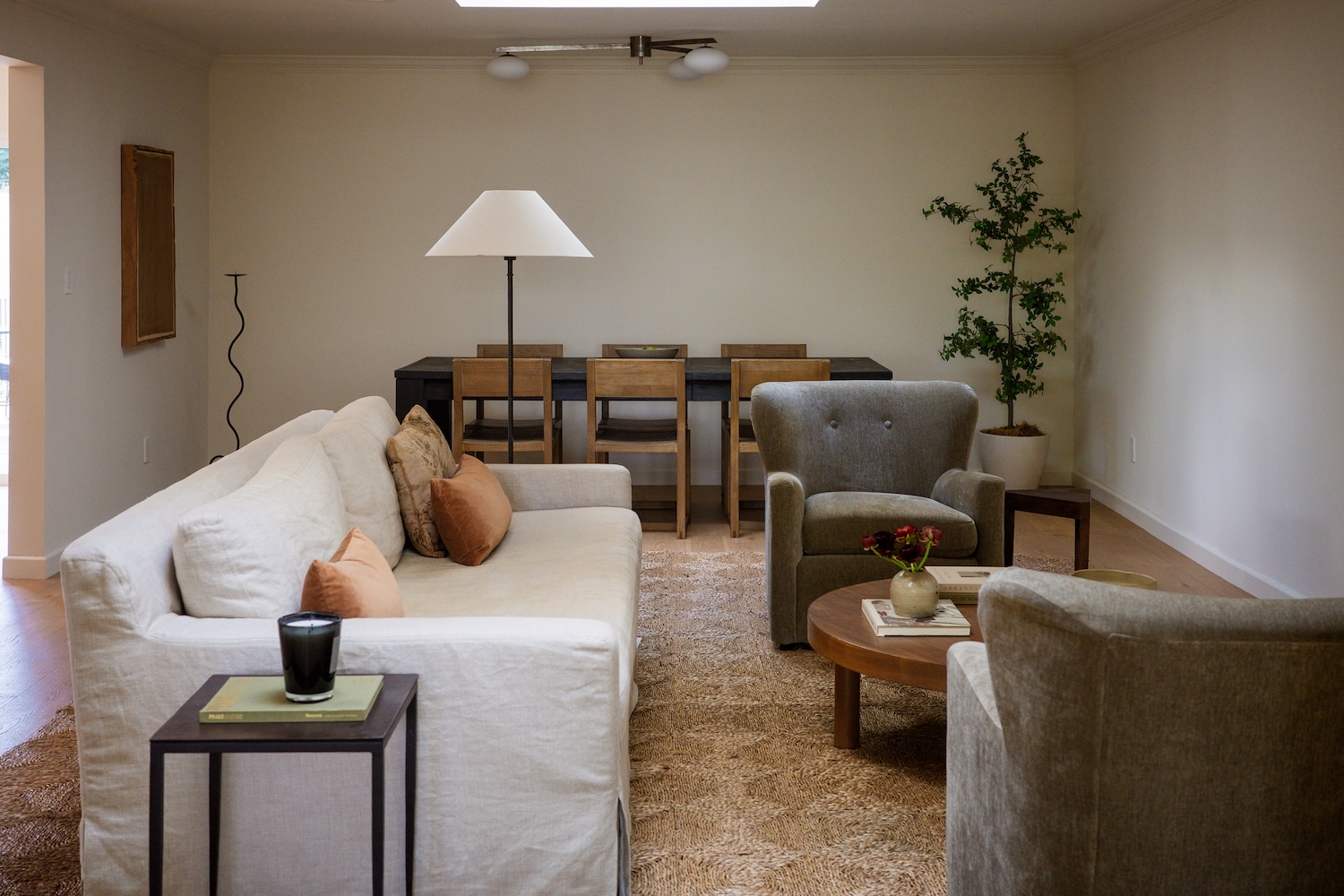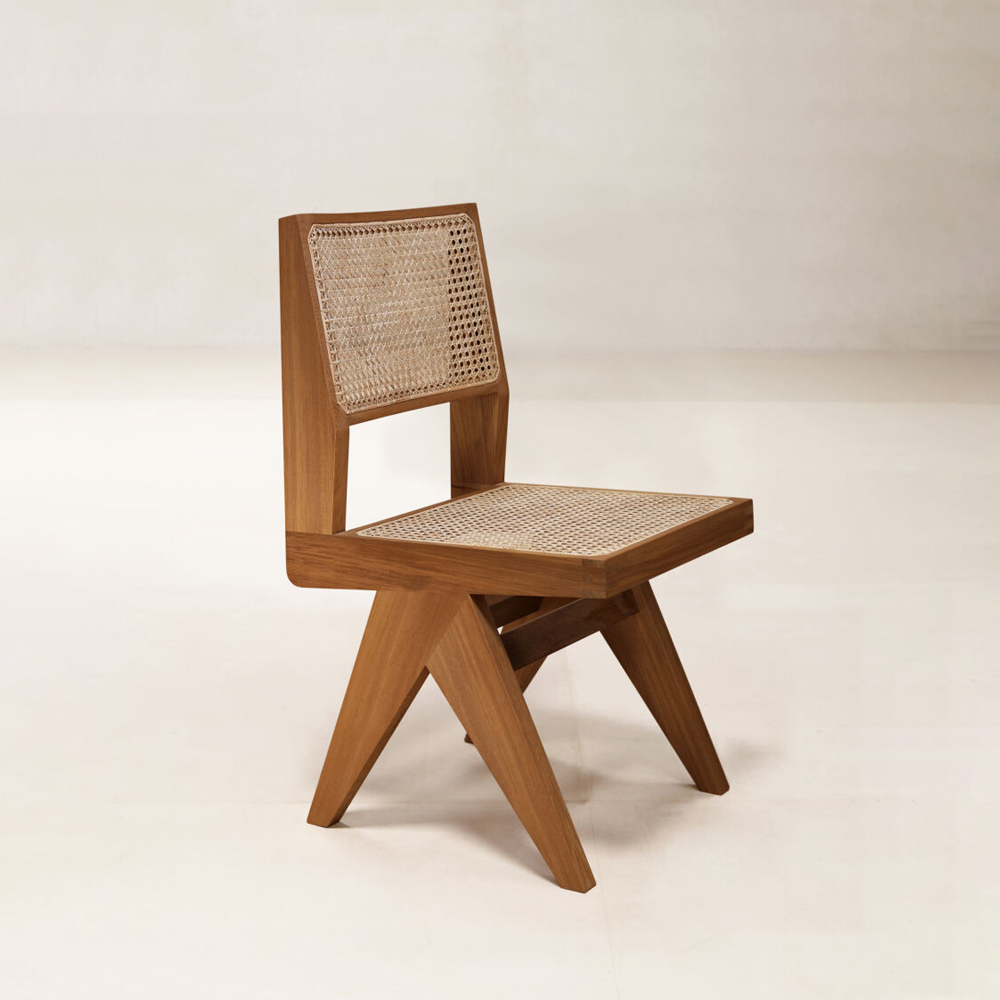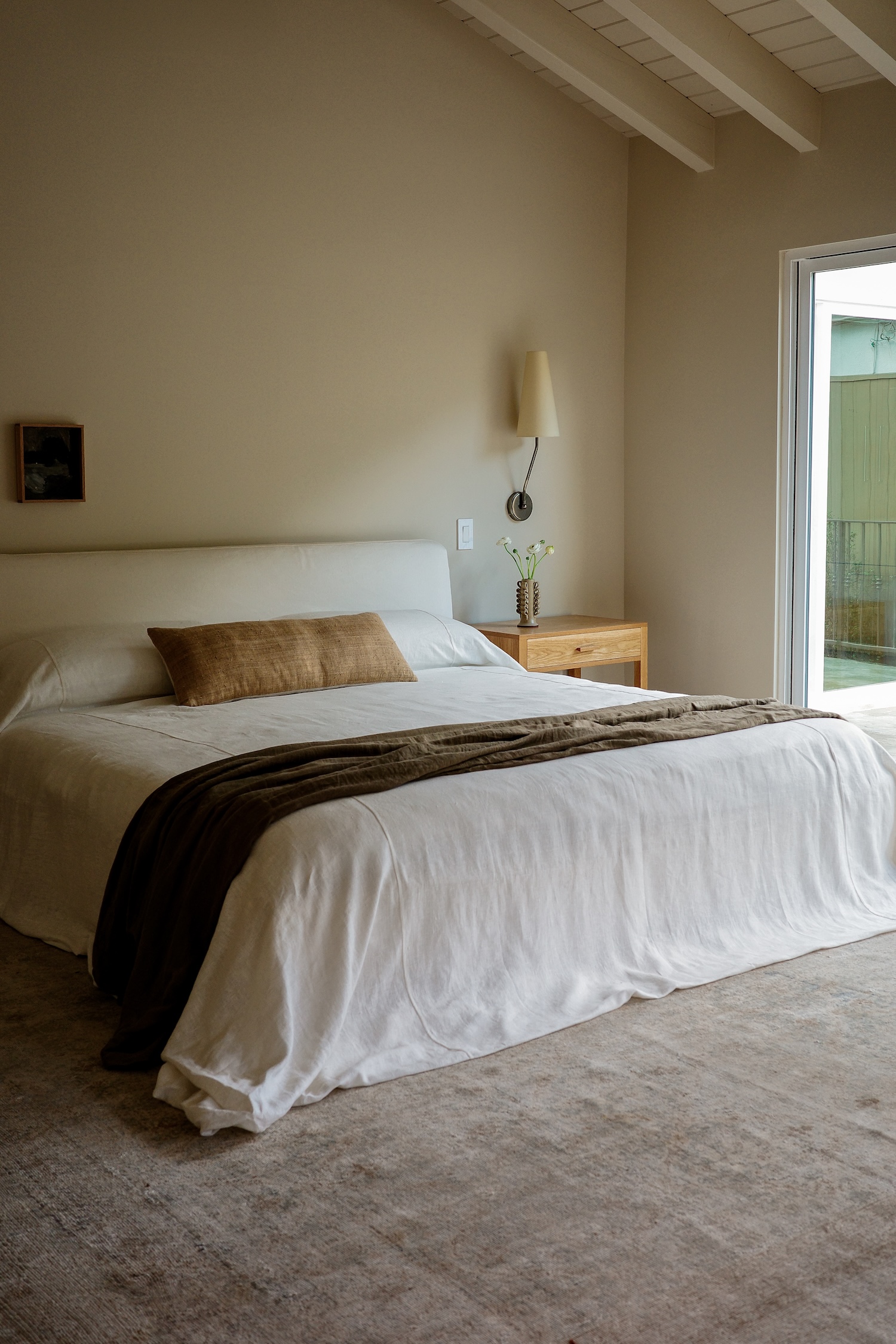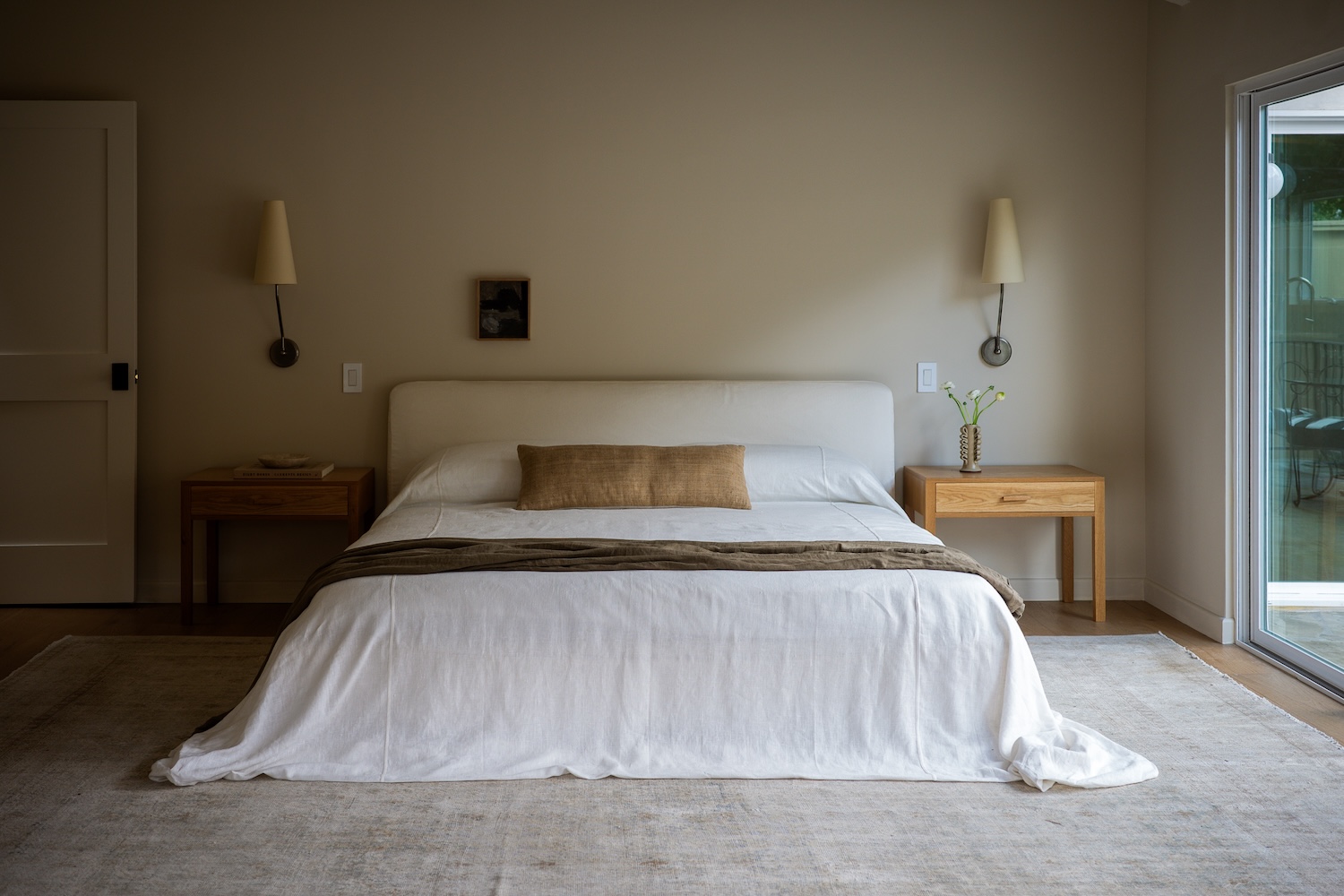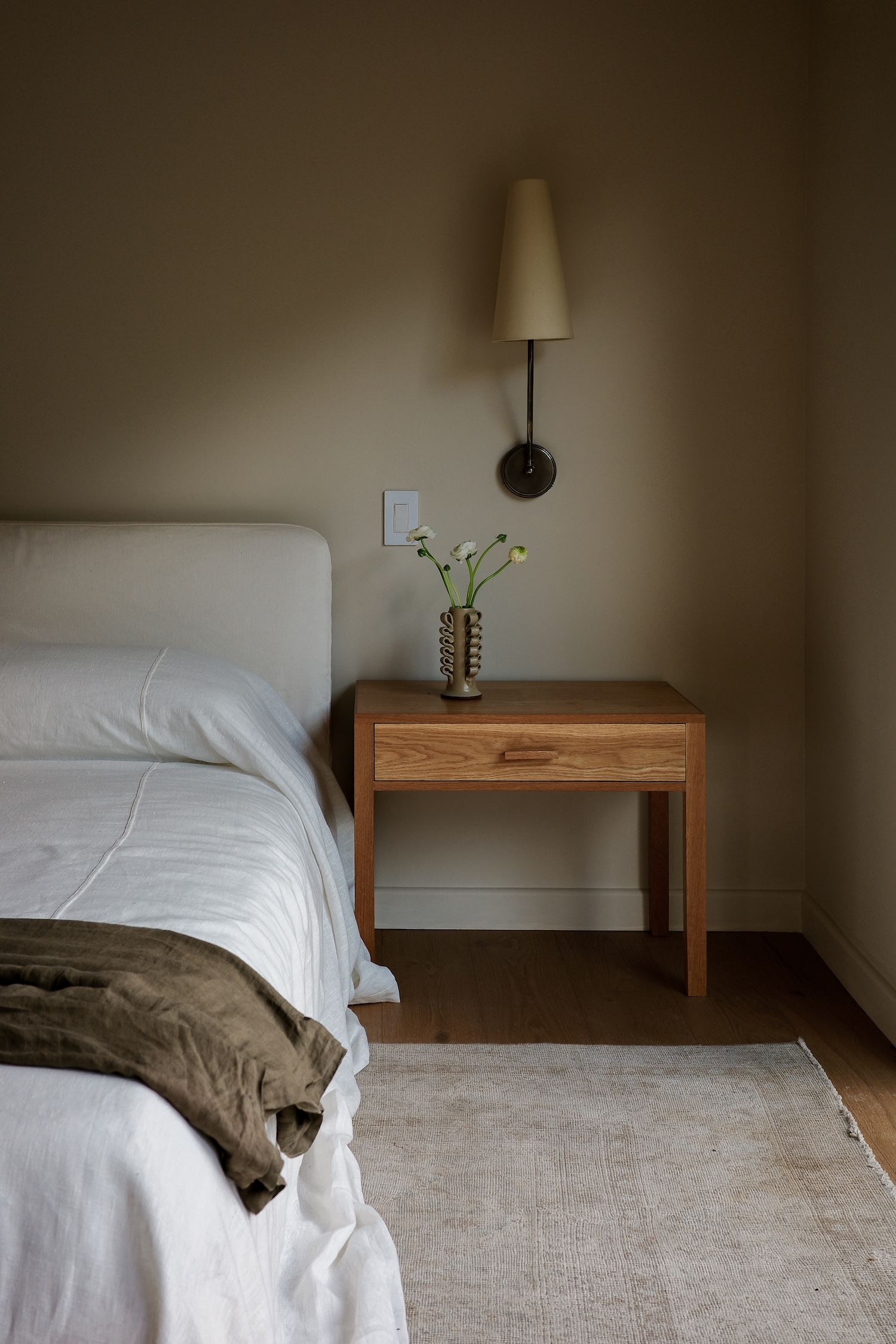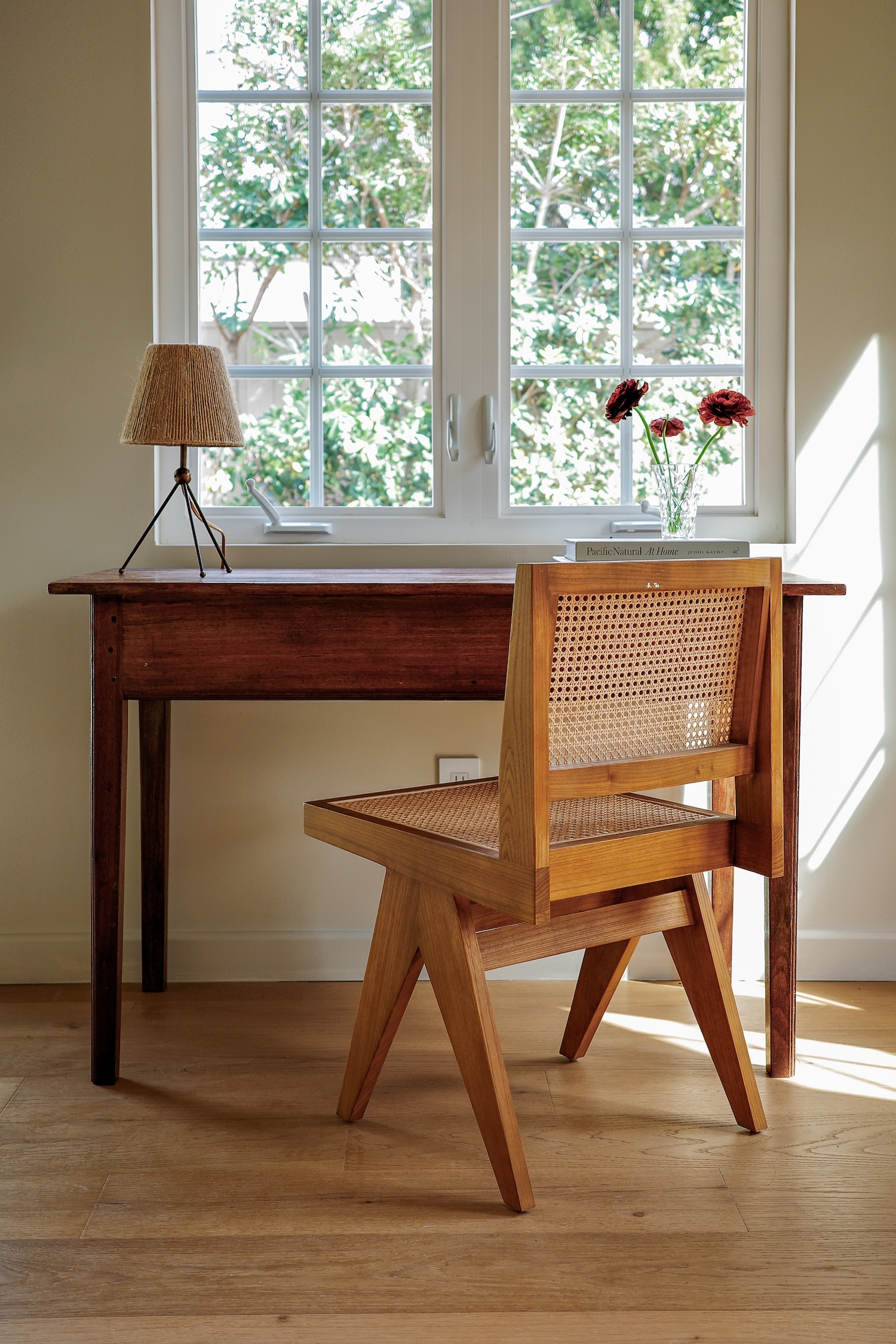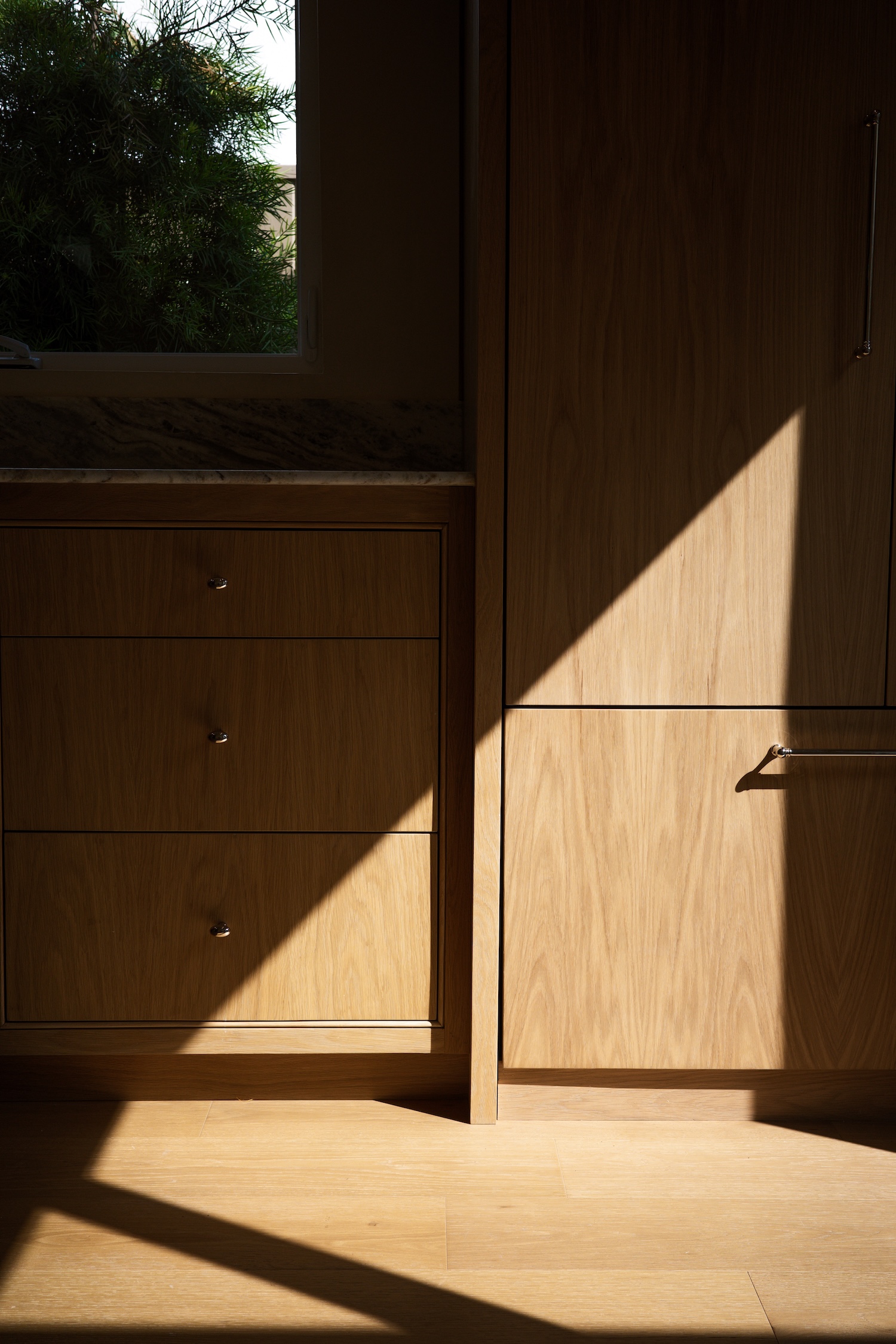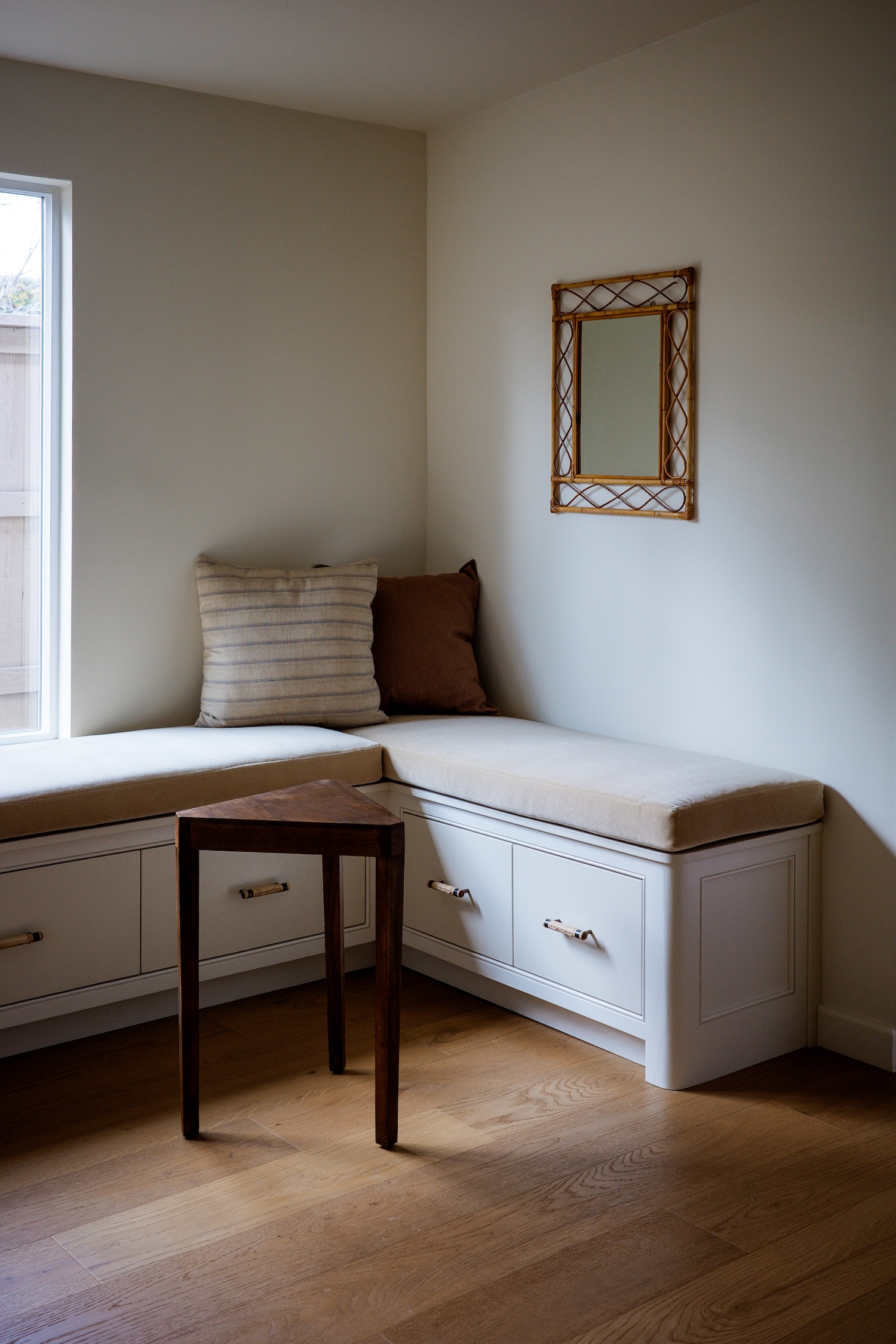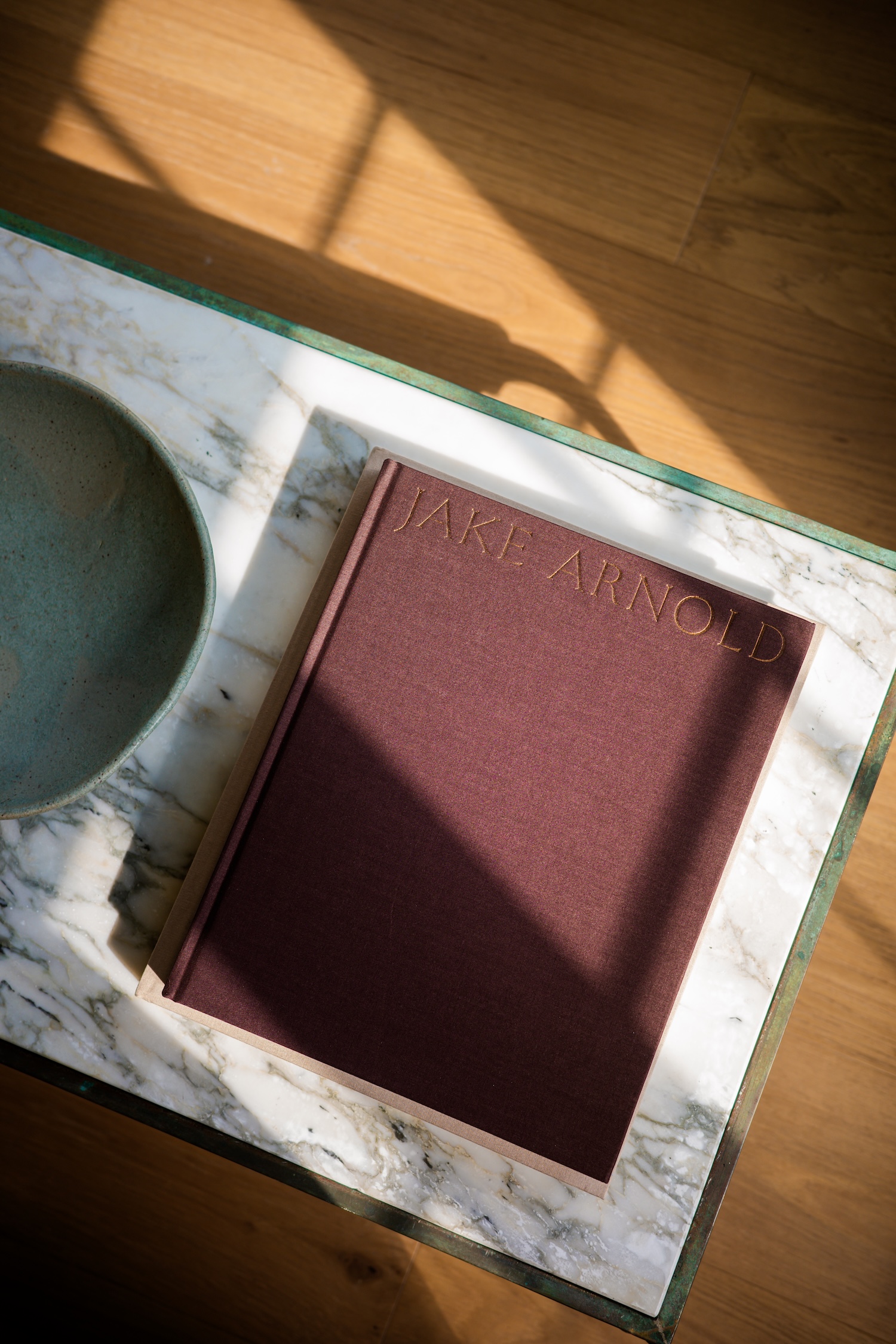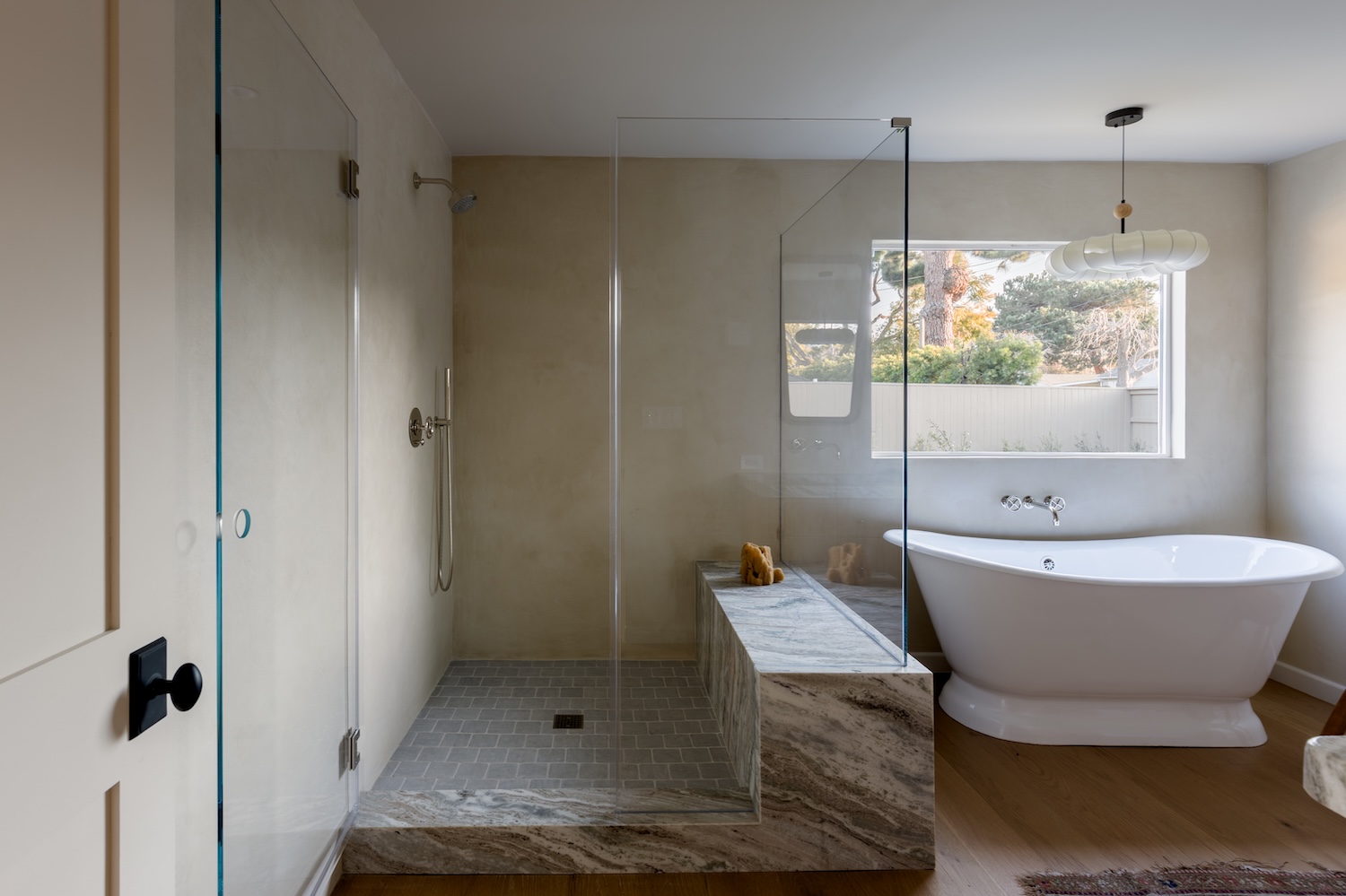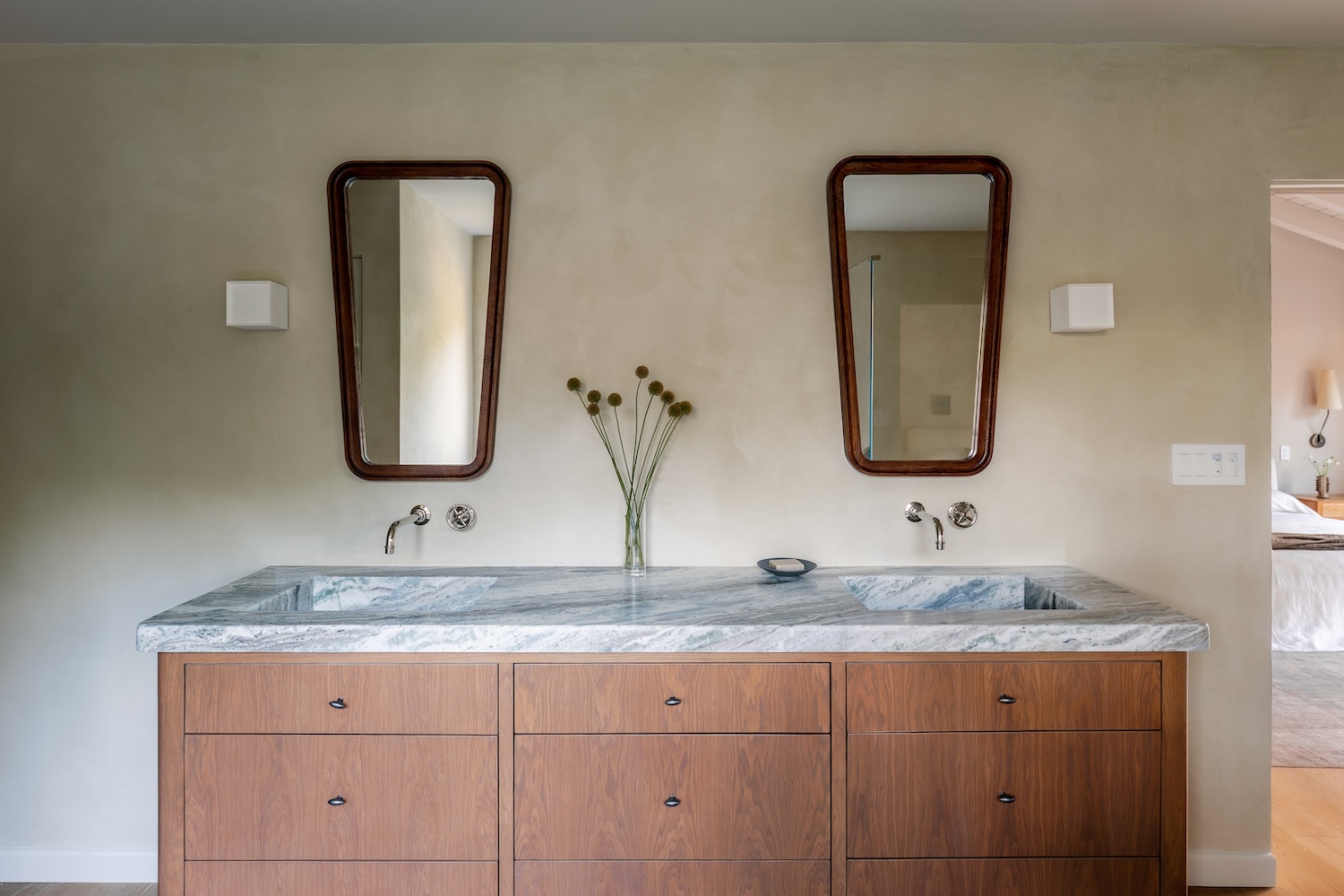Mar Vista Home is a minimalist residence located in Los Angeles, California, designed by galerie design + build. The moment you step into the renovated kitchen of this 1950s home, you’re struck by how a space once described as “feeling like an attached trailer” now embodies the warmth and conviviality of an Italian gathering place. This transformation reveals a fundamental truth about domestic design – that the most successful renovations don’t just change spaces; they reimagine their very essence.
What Jackie and Martina accomplished here goes beyond mere renovation. Their recent Italian travels catalyzed a vision that married timeless materials with contemporary sensibilities. The interplay of plaster, marble, limestone, European white oak, and unlacquered brass creates a material vocabulary that speaks simultaneously of tradition and innovation. These natural materials don’t simply decorate the space – they define its character through their inherent properties and the way they’ll age and develop patina over time.
The designers’ decision to relocate the kitchen to the former sunroom demonstrates their understanding that good design flows from function. “In true Italian fashion, the kitchen is the heart of the home,” they note, and this guiding principle informed every subsequent choice. The warm hues and clean lines create a space that feels both contemporary and timeless – a difficult balance that’s achieved through restraint rather than excess.
Storage solutions throughout the kitchen reveal a thoughtful consideration of daily rituals. The cabinetry doesn’t merely hold things; it orchestrates the choreography of cooking and gathering. This attention to functionality echoes the Italian design tradition where beauty emerges naturally from utility rather than being applied as an afterthought.
The inclusion of vintage lighting throughout the home represents a crucial design choice. These pieces serve as temporal anchors, creating dialogue between past and present. More than decorative objects, these lighting fixtures function as bridges between eras – illuminating not just the space but its connection to design history.
